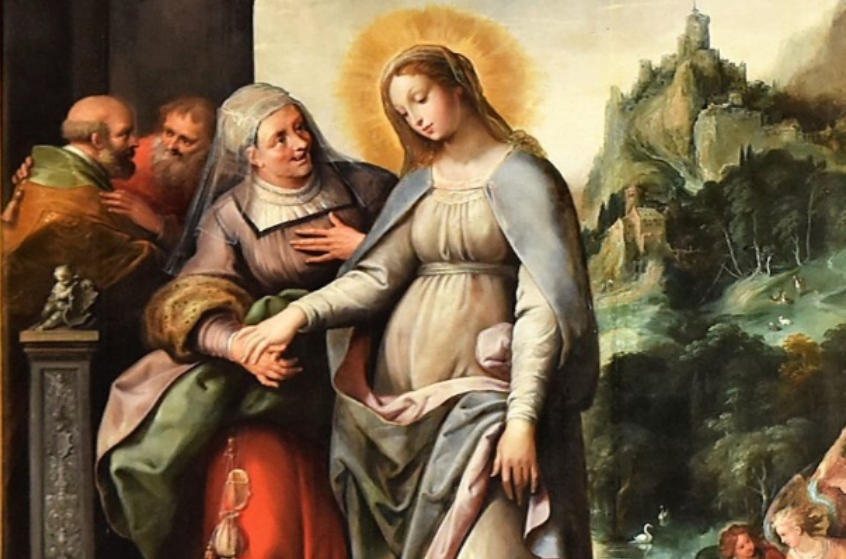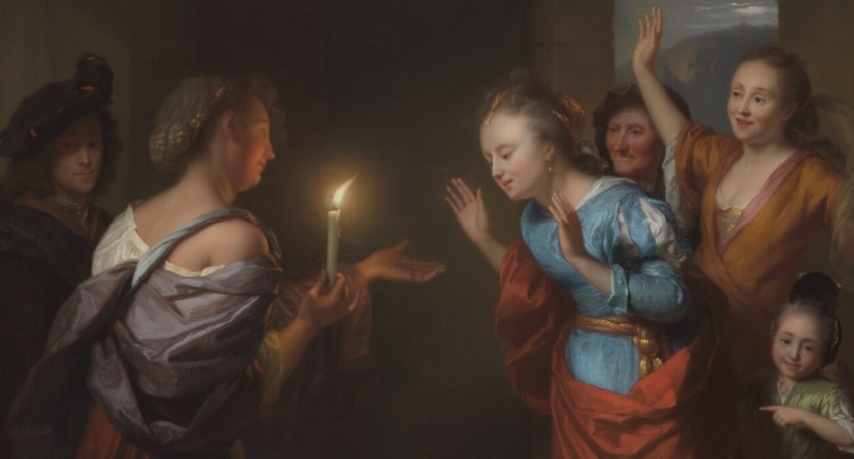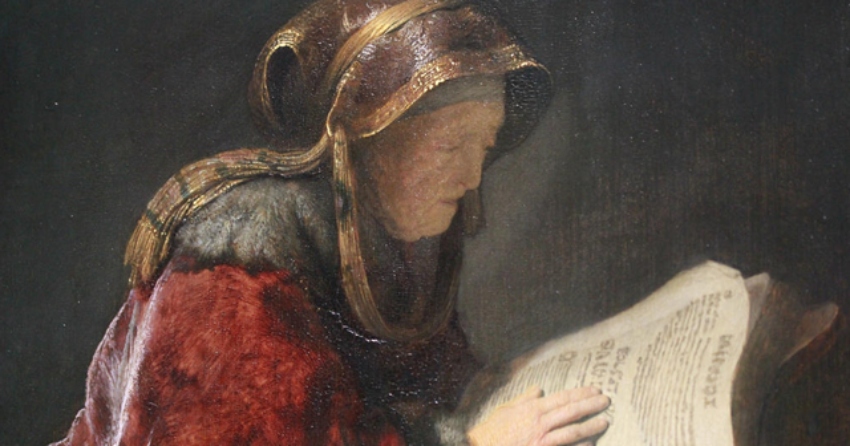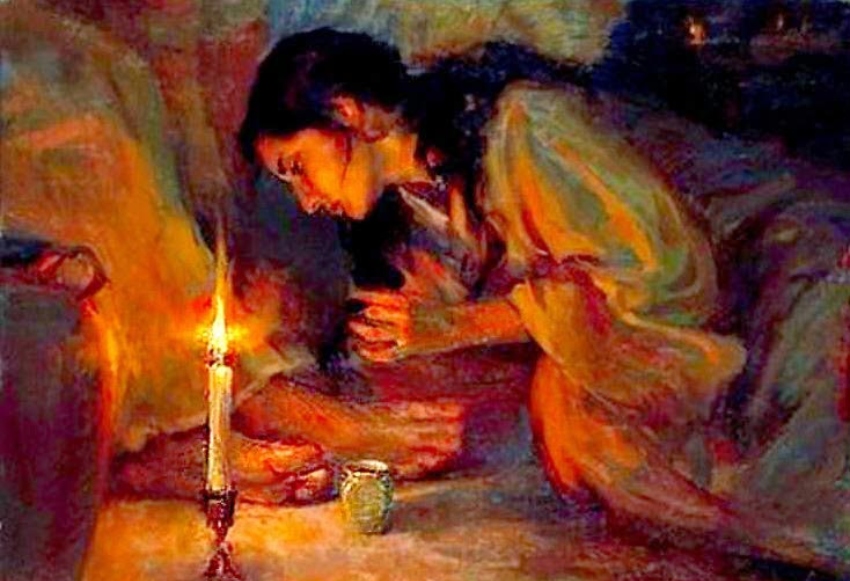Luke - The Gospel of Womanhood
Oct 18, 2021 by Cheryl Hadley
The Gospel of Luke records a surprising number of stories unique to his Gospel for their focus on women. In fact, Luke has been called the “Gospel of Womanhood” for this very reason. In it, there is much for women to learn and celebrate about God's particular love and desire for them, and His call to them as His daughters.
[[32940, 36035]]
A Special Relationship
Luke's Nativity story in Chapters 1 and 2 is unique in its attention to the words, emotions, and actions of Elizabeth and Mary. In comparison with the other accounts of the Nativity, it is far more detailed and contains precious insights into the hearts of Mary and Elizabeth not found elsewhere.
Examples of Luke’s fine detailing of these events in the life of Mary and Elizabeth include:
- Elizabeth’s conception of John the Baptist
- The Annunciation
- Our Lady’s subsequent conception of Jesus
- Her Visitation to Elizabeth and her breathtaking Magnificat
- Elizabeth’s unusual role in naming John
- Mary’s response to the shepherds’ message, and
- Simeon’s words addressed specifically to Mary

Scholars believe Luke’s detail can be attributed to the likelihood of first hand knowledge, based on interviews with Mary and perhaps Elizabeth. Whether that is historically accurate or not, the Holy Spirit clearly directed Luke for a reason. These passages are rich in insight and extraordinary mystical detail that brings truth, encouragement, hope, and inspiration to all readers, and particularly to women.
Passages Unique to Luke's Gospel
Luke contains many other passages, unique to his Gospel, which tell the stories of the remarkable and sometimes hidden women in scripture:
- Anna the prophetess (2:36–38)
- The widow of Nain whose son Jesus resurrected (7:11–15)
- Mary Magdalene anointing the feet of Jesus (7:36–50)
- The women who ministered to Jesus and traveled with him, providing for his needs (8:1–3)
- Jesus’ visit with Martha and Mary (10:38–42)
- The woman who spoke to Jesus while He was teaching (11: 27–28)
- The crippled woman whom Jesus healed on the Sabbath (13:10–17) and
- Jesus’ words to the women on His way to the Cross (23: 27–28).
These passages provide a rich source of insight into how Jesus saw women, their roles in the Faith, and their place in the sanctification of the world.
In addition, Luke's writings contains a few unique parables. His is the only Gospel that uses the parable of the woman with the lost coin to illustrate the incredible love and forgiveness of God and the joy of God when we return to Him (15: 8-10).
The Gospel writer also reveals to us the reward of a woman’s prayerful and faithful persistence in the parable of the unjust judge (18: 1-8).
A Model for Loving God
His account of Mary Magdalene anointing the feet of the Lord reveals the depth of our capacity to love Him, and models our expression of devotion to Him (7: 36–50).
Luke tells the story of Mary Magdalene, unshrinking in the face of harsh judgement by the Pharisees, her heart so overcome by love that she entered a house in which she was unwelcomed, interfered in a meal to which she was uninvited, and subjected herself to disdain - all to express her devotion to Jesus for His merciful love.
Unable to contain her emotion and the intensity of her own love, she wept on Jesus, her tears washing his feet, her hair wiping them dry. It's hard to imagine a more intimate and compromising show of love for that day and time.
In this passage, Luke reveals a pure, selfless, and unrestrained love for Jesus Christ. It is a model for us all. Anointing Jesus’ feet with a priceless and extravagant gift that emphasizes her deep gratitude, Mary Magdalene embodies what it means to love Him with complete and utter abandon, and detachment from others and the world.
Christ used her grateful, humbled spirit and her act of love to teach His judgmental gawkers: Those who love most understand that only He liberates us from our own enslavement. In this woman, we see a role model in loving Him with our frail human hearts and allowing Him to make us whole.
[[6260, 8314]]
Equal in Dignity and Deeply Loved
We have no specific record of the whereabouts of any apostle other than John during the Crucifixion. Yet all three synoptic Gospels tell us of the women who were present at the Crucifixion as eyewitnesses to the events. They waited, devotedly, upon the Lord. We see here a model for trust and perseverance.
Luke's passages reveal that women prayed, hoped, believed, were baptized, persecuted, and persevered for the Faith just as men did. Jesus valued them and considered them worthy of the Kingdom. He saw them as role models and examples for their faith, receptivity and capacity to love.
Despite their secondary social status, women are an important part of the Gospel narrative of Luke. In most ways, their interactions with Christ paralleled His interactions with men. He frequently disregarded social norms to love the marginalized, and that meant doing what would have been unthinkable to a Jewish rabbi of His time - treating women as equal in dignity before God, and deeply and intimately beloved.

The Parable of the Lost Coin by Godefriedus Schalcken
An Invitation to Go Deeper
The Gospel of Luke is food for thought and meditation as women consider how Jesus wants them to seek Him, minister with Him, and love others through Him. Through the Holy Spirit, God has included these insights in the book of Luke to encourage us and invite us to go deeper into his writings.
Spend some time in Luke's Gospel as an heir to His promises, and encounter God's call to the heart of His daughters!







